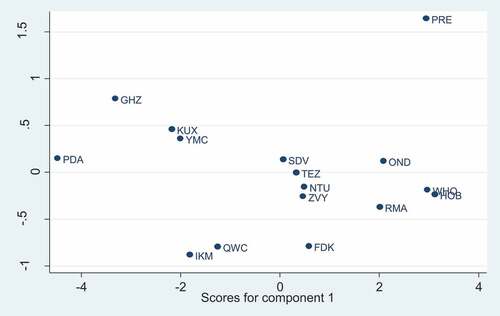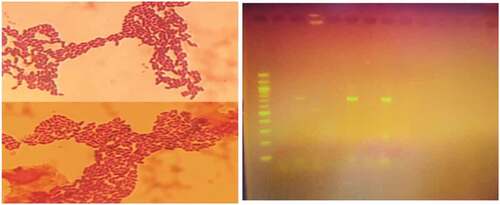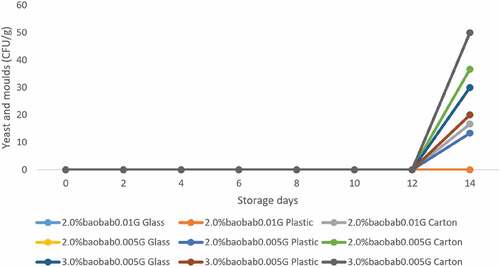Figures & data
Table 1. Total Titratable Acidity (g/100 ml lactic acid) of cultured milk supplemented with baobab fruit pulp at different concentrations.
Table 2. Firmness of cultured milk supplemented with baobab fruit pulp at different concentrations.
Table 3. Consistency of cultured milk supplemented with baobab fruit pulp at different concentrations.
Table 4. Cohesiveness of cultured milk supplemented with baobab fruit pulp at different concentrations.
Table 5. Work of cohesion of cultured milk supplemented with baobab fruit pulp at different concentrations.
Table 6. Proximate composition of cultured milk supplemented with baobab fruit pulp at different concentrations.
Table 7. Micronutrient content of cultured milk supplemented with baobab fruit pulp at different concentrations.
Table 8. Total coliforms (log10 CFU in cultured milk supplemented with baobab fruit pulp at different concentrations.
Table 9. Lactic Acid Bacteria (log10 CFU) in cultured milk supplemented with baobab fruit pulp at different concentrations.
Table 10. Principal components (eigenvectors).
Figure 2. Scores for cultured formulations supplemented with baobab fruit pulp.

Data availability statement
The original research generated data used to support the findings of this study are included in this article.


